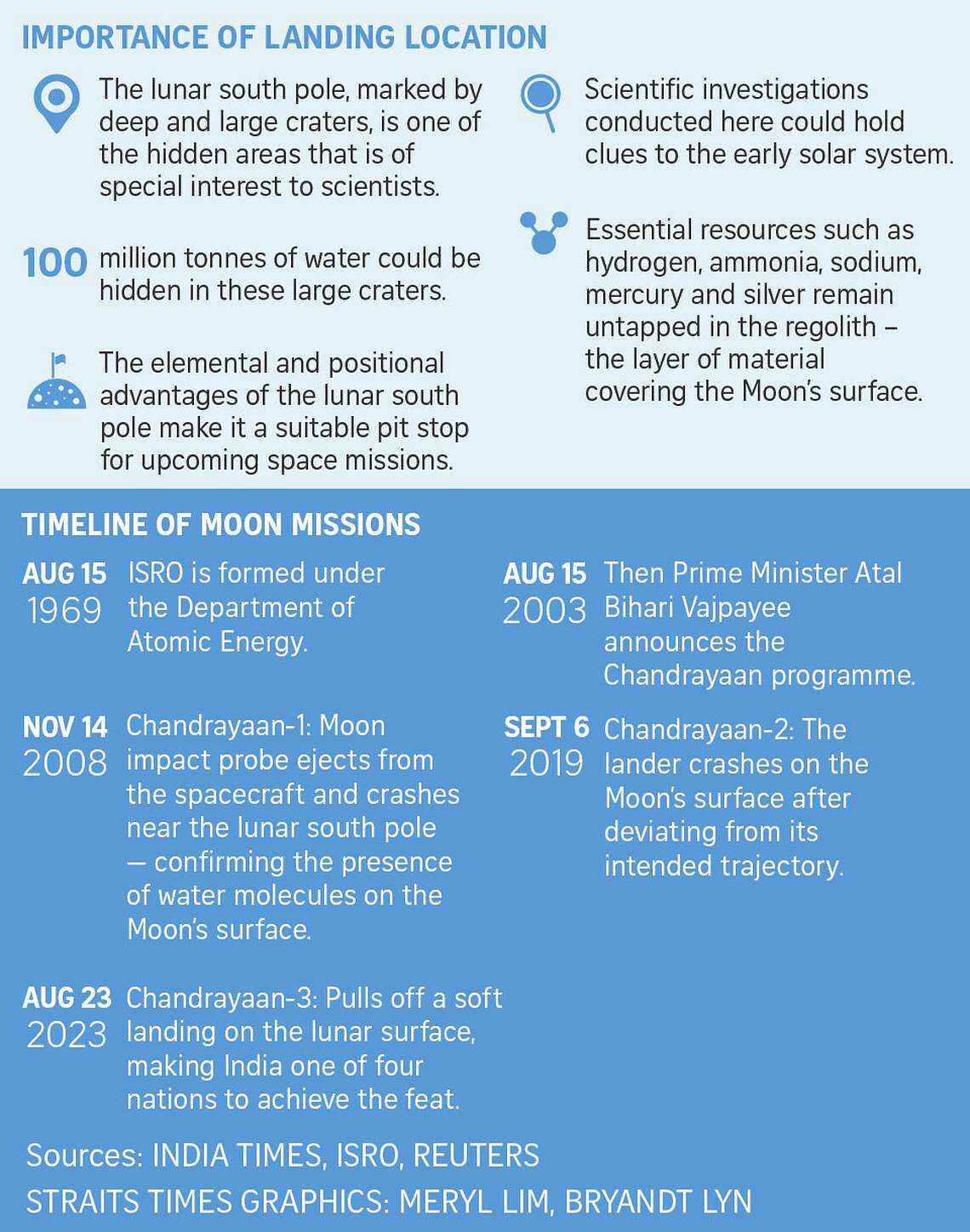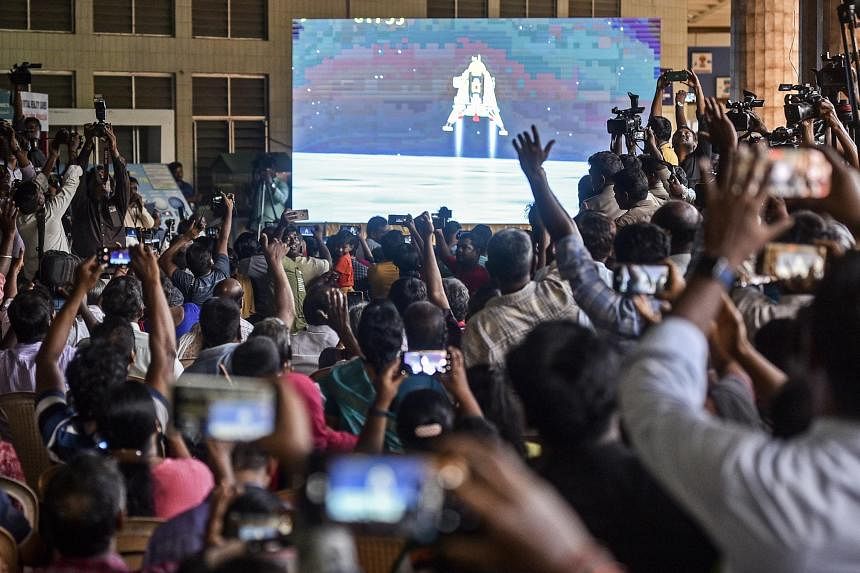NEW DELHI - It was one final, small but critical manoeuvre from its lunar lander that brought a giant leap for India’s space programme.
At 6.03pm Indian time, the country became the first to land a spacecraft in the Moon’s south polar region when Vikram touched down gently after a 40-day journey. India also became only the fourth country after the United States, Russia and China to land on the Moon.
“India is on the Moon,” declared Mr S. Somanath, chairman of the Indian Space Research Organisation (ISRO), moments after the historic occasion as the control centre in Bengaluru erupted with cheers.
Prime Minister Narendra Modi, who had joined in the live broadcast from Johannesburg, South Africa, where he is attending the Brics summit, described the feat as “new India’s victory cry” and said the mission’s success belonged “to all of humanity”.
After travelling 5.5 million km, the lander and the rover it was carrying entered a tense and final stage at 5.44pm. The lander flipped from its high-speed horizontal position to a vertical one so that it could execute a gentle descent to the Moon’s surface. Its horizontal velocity was reduced from nearly 6,048kmh at a height of 30km from the surface to nearly zero before executing a soft landing at the designated site.
This entire descent phase and landing was programmed and involved no intervention from Earth.
Former ISRO chairman K. Sivan had described the final landing stage of India’s earlier Moon mission as “15 minutes of terror”.
It was during this phase that India’s previous attempt to reach the Moon in September 2019 failed.
The latest Chandrayaan-3 mission, which cost less than $99 million, incorporated a “failure-based design”, with ISRO factoring in several lessons from 2019, including providing a wider landing zone.
The Pragyan rover on board the lander was expected to roll out “in a matter of hours” after the successful landing.
Excitement has been building across India since the launch on July 14 from the Satish Dhawan Space Centre in Sriharikota, off the coast of the southern Indian state of Andhra Pradesh. Ahead of the scheduled landing, prayer ceremonies were held on Wednesday by ordinary citizens, children showed up at schools with posters wishing the mission well, and special live screenings were held for the public.
Chandrayaan-3’s success will augment India’s status as a global space power. Other missions that the country has lined up in the next few years include Aditya-L1 (a solar orbiter mission), Shukrayaan-1 (a Venus orbiter mission), and Gaganyaan (India’s first human space flight).
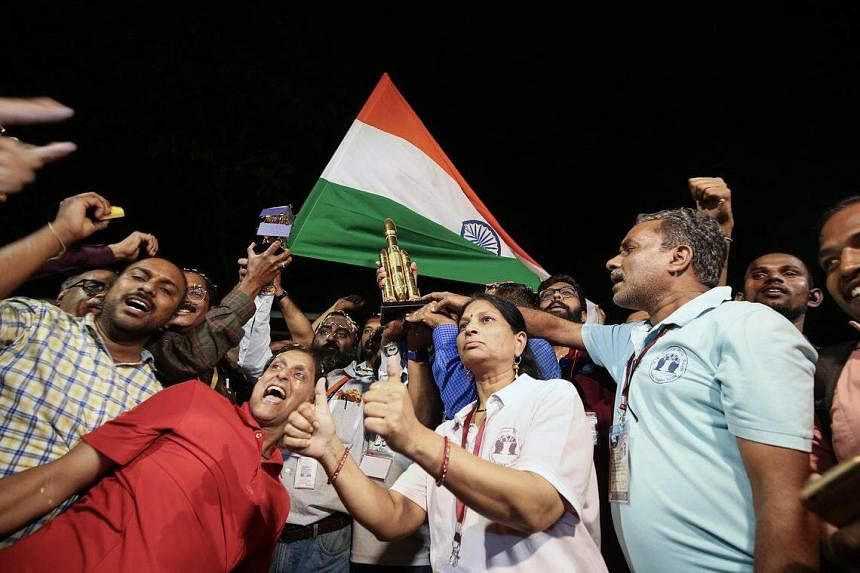
Dr Ajey Lele, a consultant at the Manohar Parrikar Institute for Defence Studies and Analyses in New Delhi, said the successful soft landing is “yet another feather in ISRO’s cap”.
But the more crucial achievement will lie in what India’s space agency can do “from the point of view of science”.
India’s Chandrayaan-1 mission indicated the presence of ice inside the Moon’s polar craters, and the latest mission will focus on the search for water molecules and possible resources to sustain life.
“Much is expected, but I think India has got less amount of time in hand,” said Dr Lele.
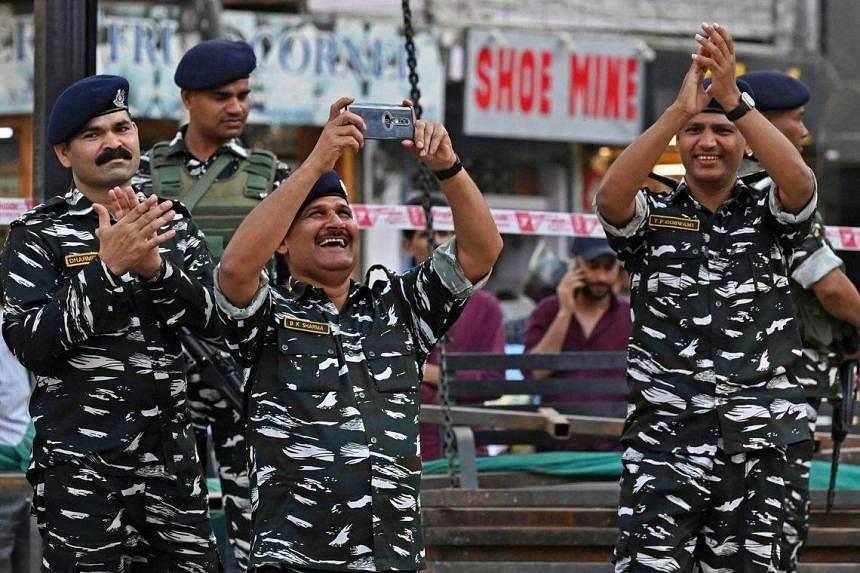
The solar-powered instruments on board the lander and the rover have a life of just one lunar day when sunlight is continually available. That works out to 14 Earth days.
Landing softly on the Moon is tricky, as several recent missions have shown. Russia’s Luna-25 lander crashed last Saturday, four months after the United Arab Emirates’ Rashid rover, carried aboard a private Japanese lander, shared the same fate.
Until India’s success on Wednesday, China was the only country to land on the Moon this century – in 2013, 2019 and 2020.
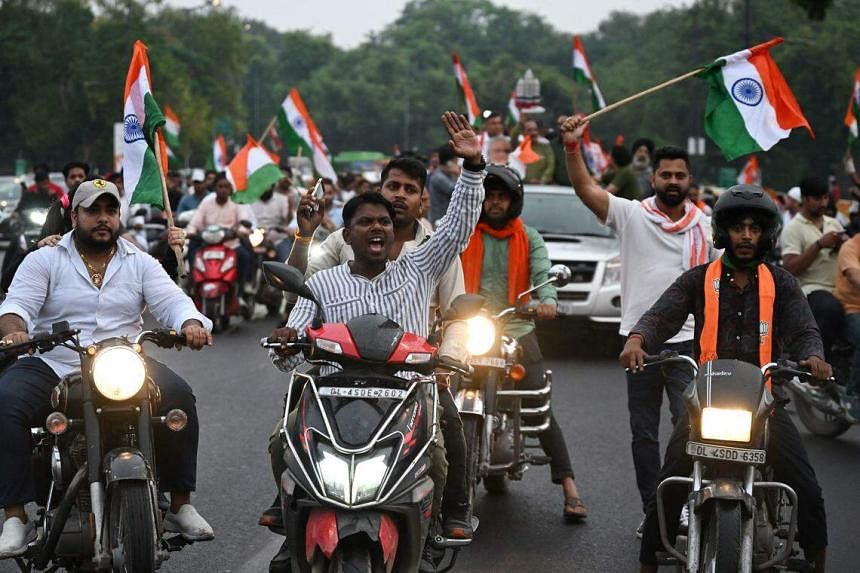
But most lunar landings have occurred near the Moon’s equator as it is easier given the smoother and sunlit terrain. The Moon’s polar regions are marked by deep and large craters, many of which are several kilometres wide.
The unexplored polar regions are also in perpetual shadow, and it is these deep and frigid locations that are potentially rich in water ice and the secrets to the evolution of the solar system.

